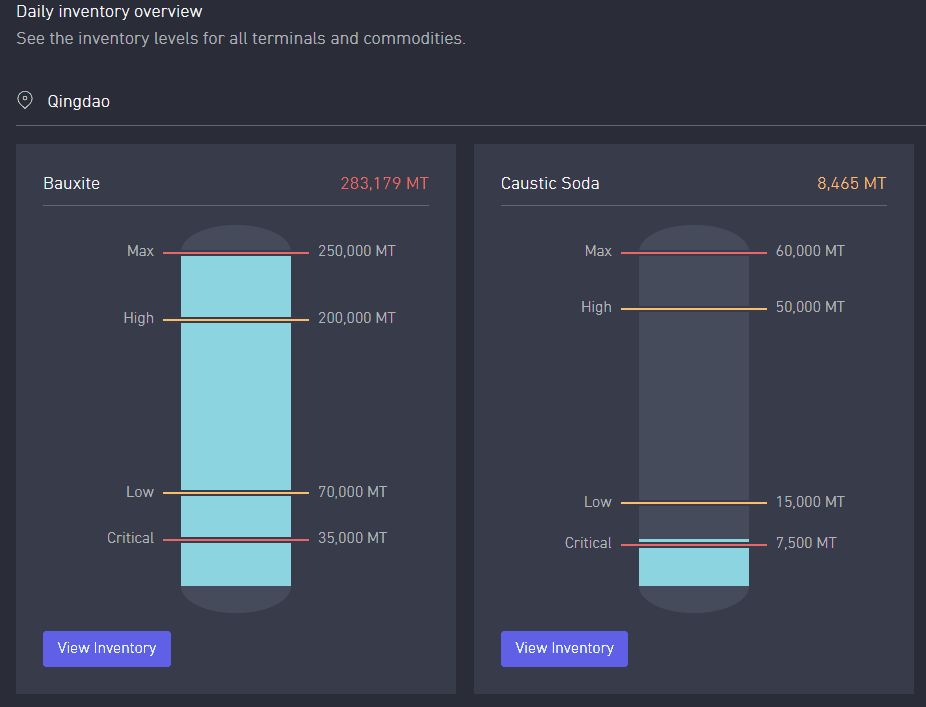
How combining business processes can reduce costs, risks and CO2 emissions in your supply chain
Posted
Friday, November 29, 2019
Related stories
->
We're looking for a Senior Product Designer / UX Designer
->
Redefining Shipping: A Roadmap to 2050 and Beyond
->
Industry leaders coming together at the Klaveness Supply Chain Summit in Perth this week
->
CargoValue is about to get even smarter through its new interface
->
Proud to be part of a greener future at the Sea Cargo Charter's Annual Meeting
Whether buying CIF or FOB, real-time updates of incoming shipments is vital to stay informed of any delays that could occur during the voyage or at port level. Reasons can be numerous (weather, engine trouble or port congestion just to name a few) but the majority of industrial companies relying on raw materials will agree that having the accurate ETA of a vessel is essential. Essential for knowing if business will continue as usual or if re-adjustments are needed.
Today, many industrial companies rely on a combination of tools to achieve this level of visibility. Most commonly this is done in spreadsheets and through manual forms of communication internally and externally with suppliers and freight providers. Managing logistics from multiple locations and via a multitude of planning tools requires stakeholders to pour over numerous information sources to collect reliable intel. This disconnected process can be time-consuming and prone to human error, meaning when a disruptive event does occur it can be too late to take proactive measures.
Learn more about how CargoValue empowers companies to streamline this process by bridging these gaps across the supply chain and provide stakeholders with the most up-to-date and accurate data possible.
Advanced Vessel Tracking
The quality and reliability of AIS data has made significant improvements in recent years, CargoValue sources the latest satellite data to provide companies with real-time vessel positions. Furthermore, push notifications proactively inform users when a vessel announces a new ETA and the impact on inventories. Thereby drastically reducing the need to keep close dialogue with freight operators and cross reference shipping schedules with information received from other sources.

Advanced Scheduling
Many industrial companies plan for raw material needs up to several years in advance and require flexibility to re-align their plans over time as production needs are finalized and agreements are made with freight providers. CargoValue automates this process by use of templates containing common shipment configurations with pre-populated load/discharge rates and sailing times. The platform’s Schedule Optimizer tool further enables dynamic planning by suggesting a “perfect plan” based on forecasted consumption and average lot sizes of the vessels chartered.
Real-time Inventory Management
Having real-time intel on stock levels at port or plant is essential for a company for many reasons. Most critically will be to ensure production can continue uninterrupted. CargoValue bridges the ongoing shipping schedule (with any deviations or delays) into the inventories. This provides companies with a control tower level of visibility of stocks across all sites, with real-time updates pushed into inventories based on actual production/consumption figures.

Port Insights
Port congestion can be a bottleneck that delays vessels at either load or discharge. By leveraging the latest satellite data and port statistics, CargoValue allows users to analyze a port on a granular level and extract intel by viewing all vessels at anchorage, occupying the berths and announcing ETA at the port in the next 30 days.
Demurrage forecasting and analysis
The majority of companies depending on seaborne transportation for bulk commodities will agree that demurrage is a challenge. The costs alone of laytime can become astronomical and often require full-time personnel dedicated to forecasting potential demurrage situations. CargoValue’s Demurrage Manager analyzes the ongoing and future plan and detects potential demurrage causes as a result of sub-optimal planning, berth clashes or capacity constraints preventing discharge.
